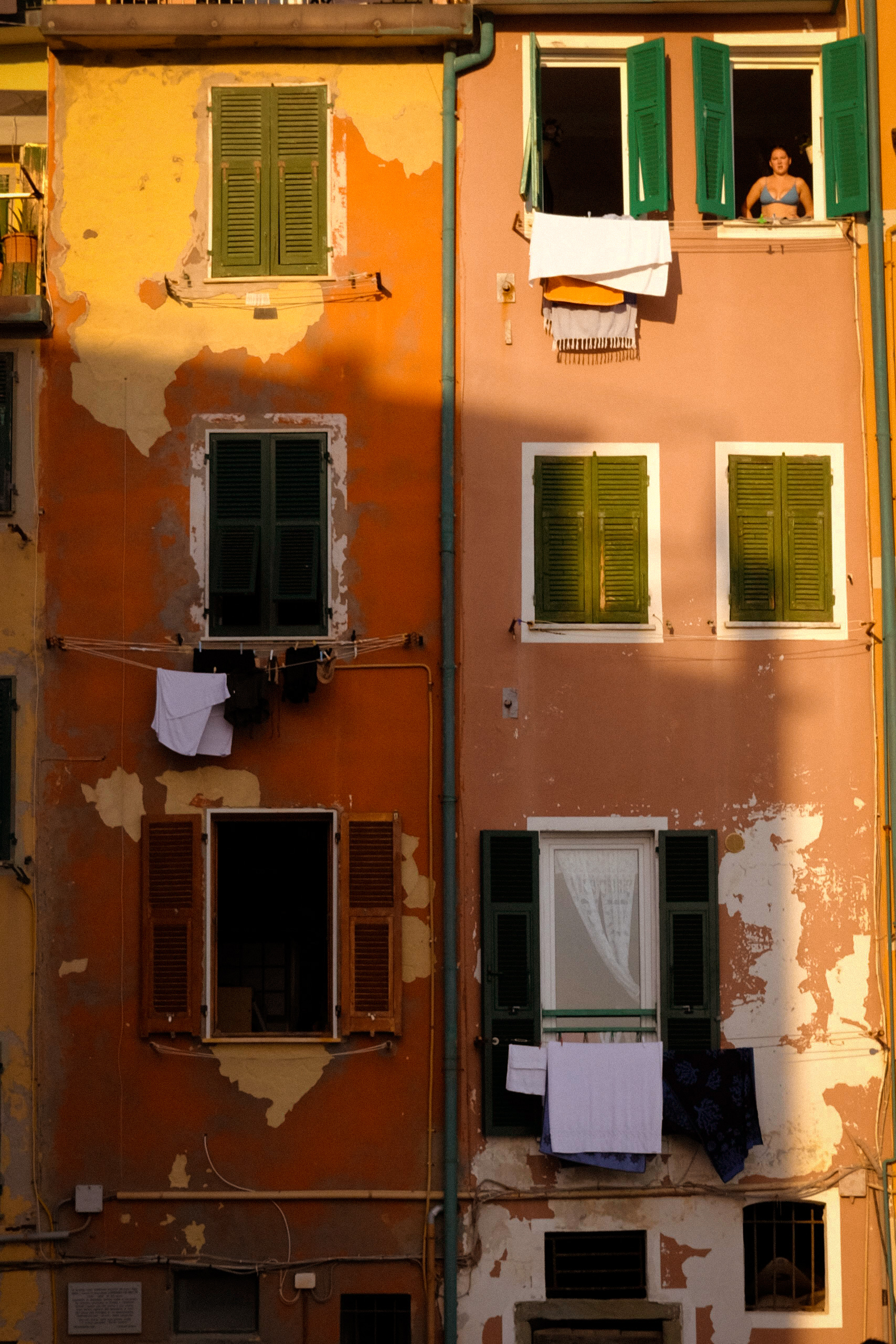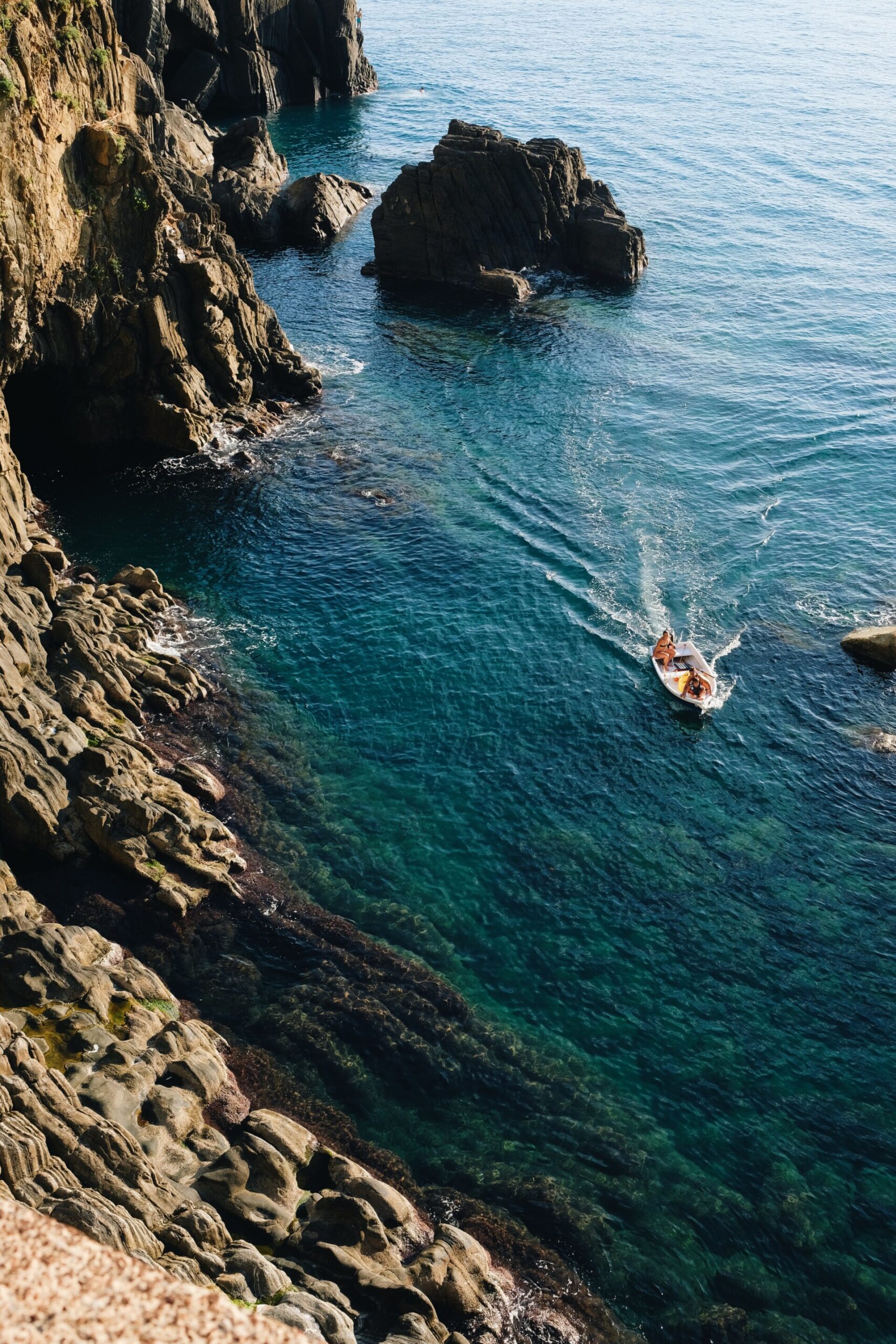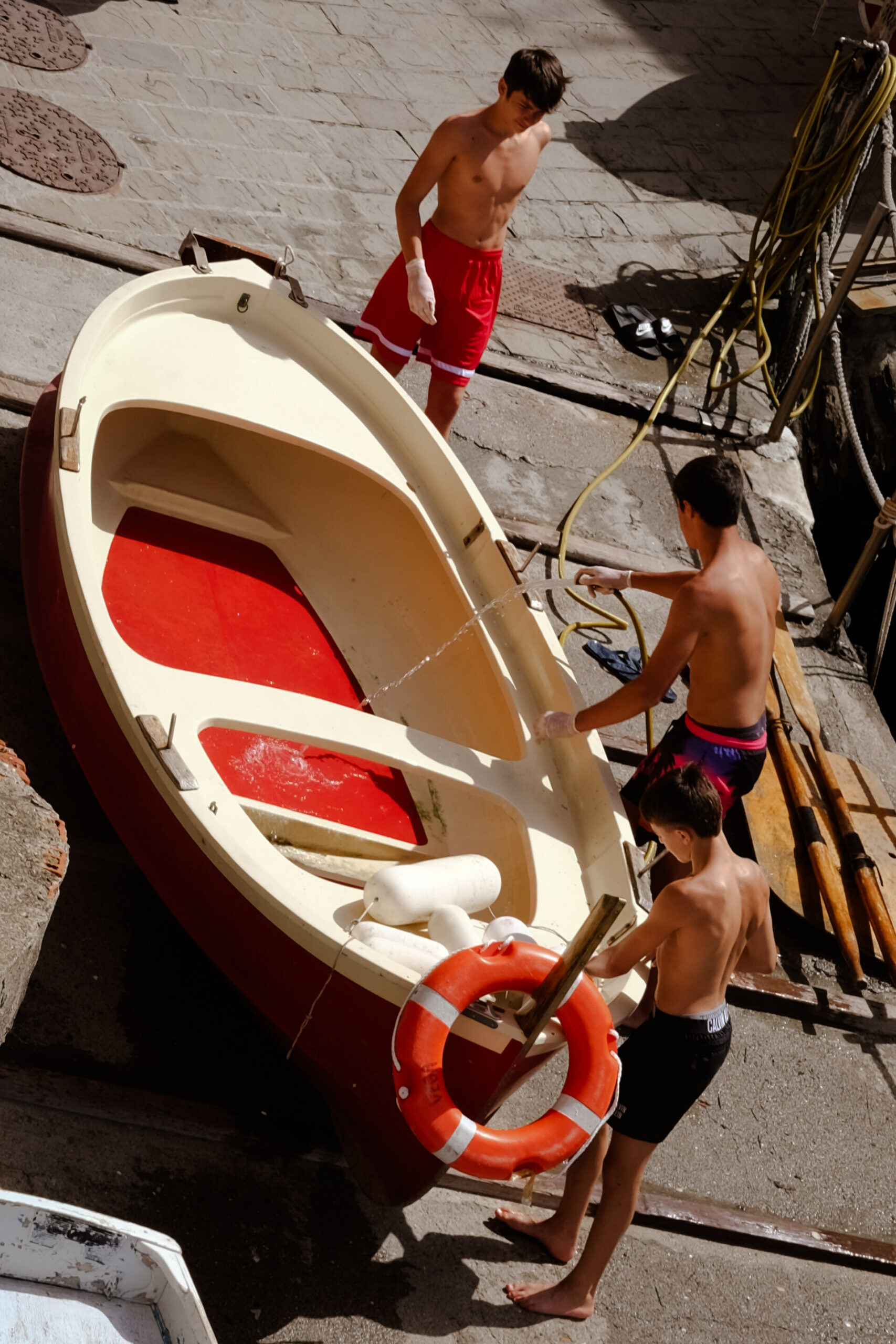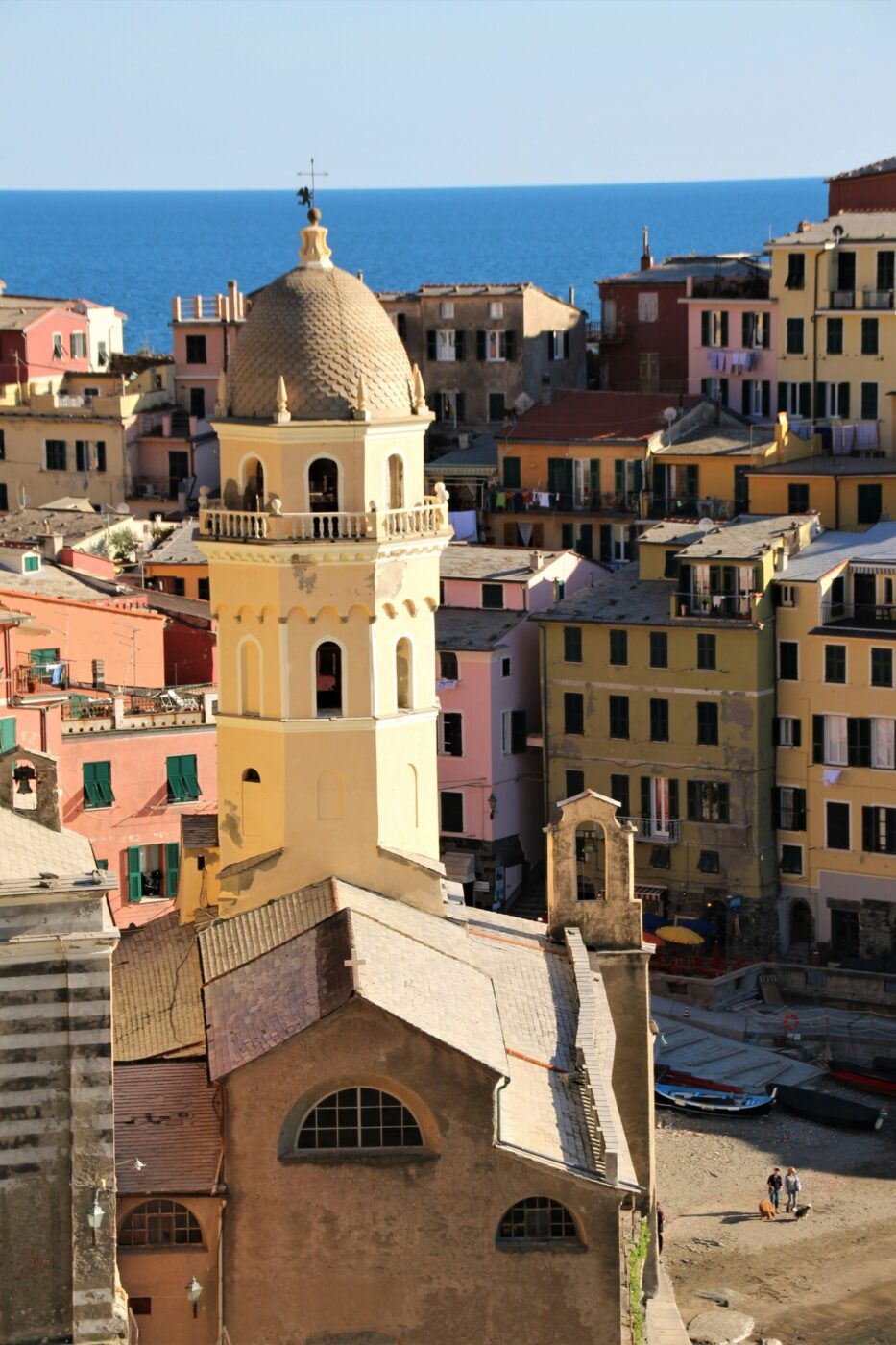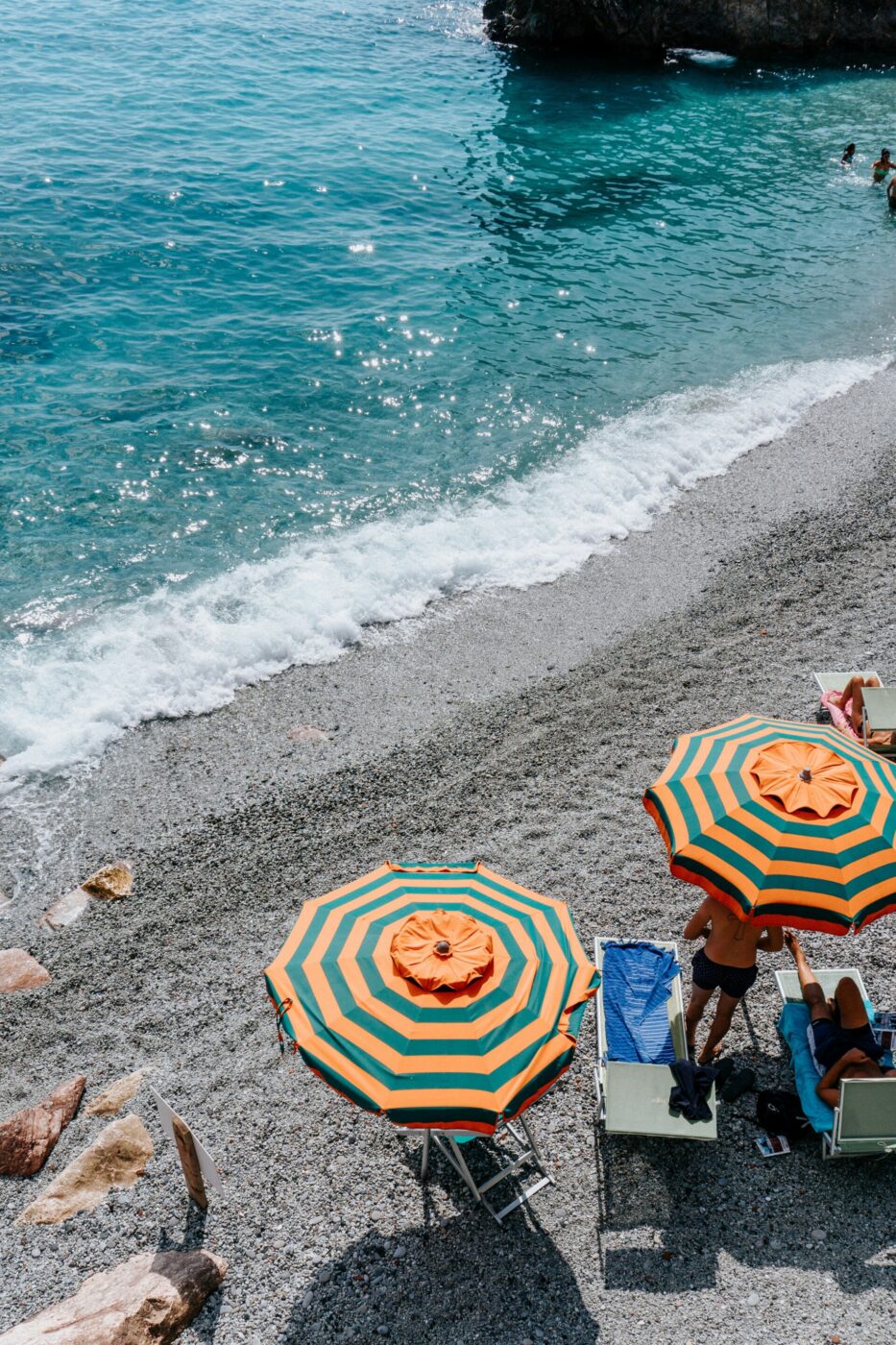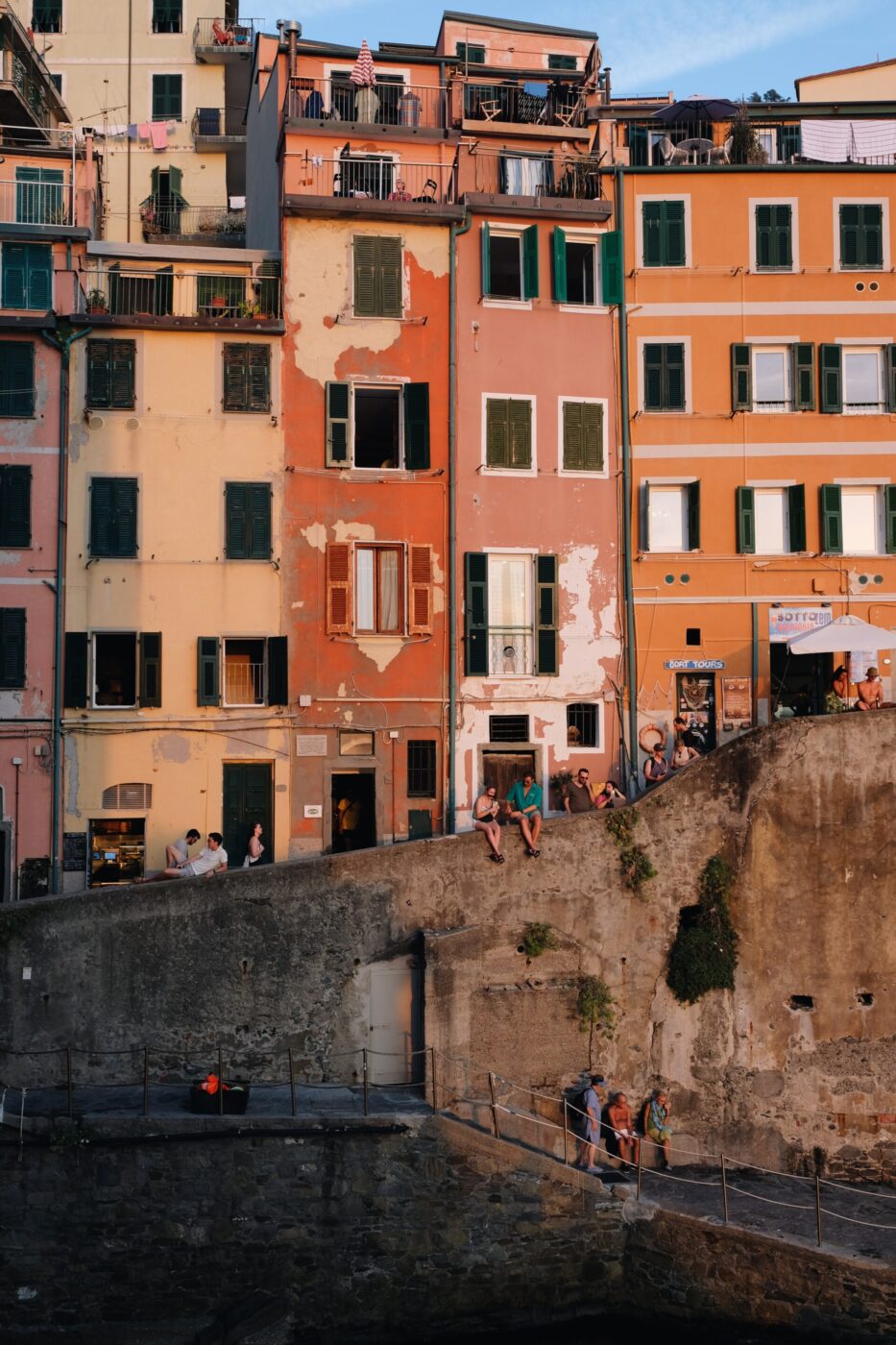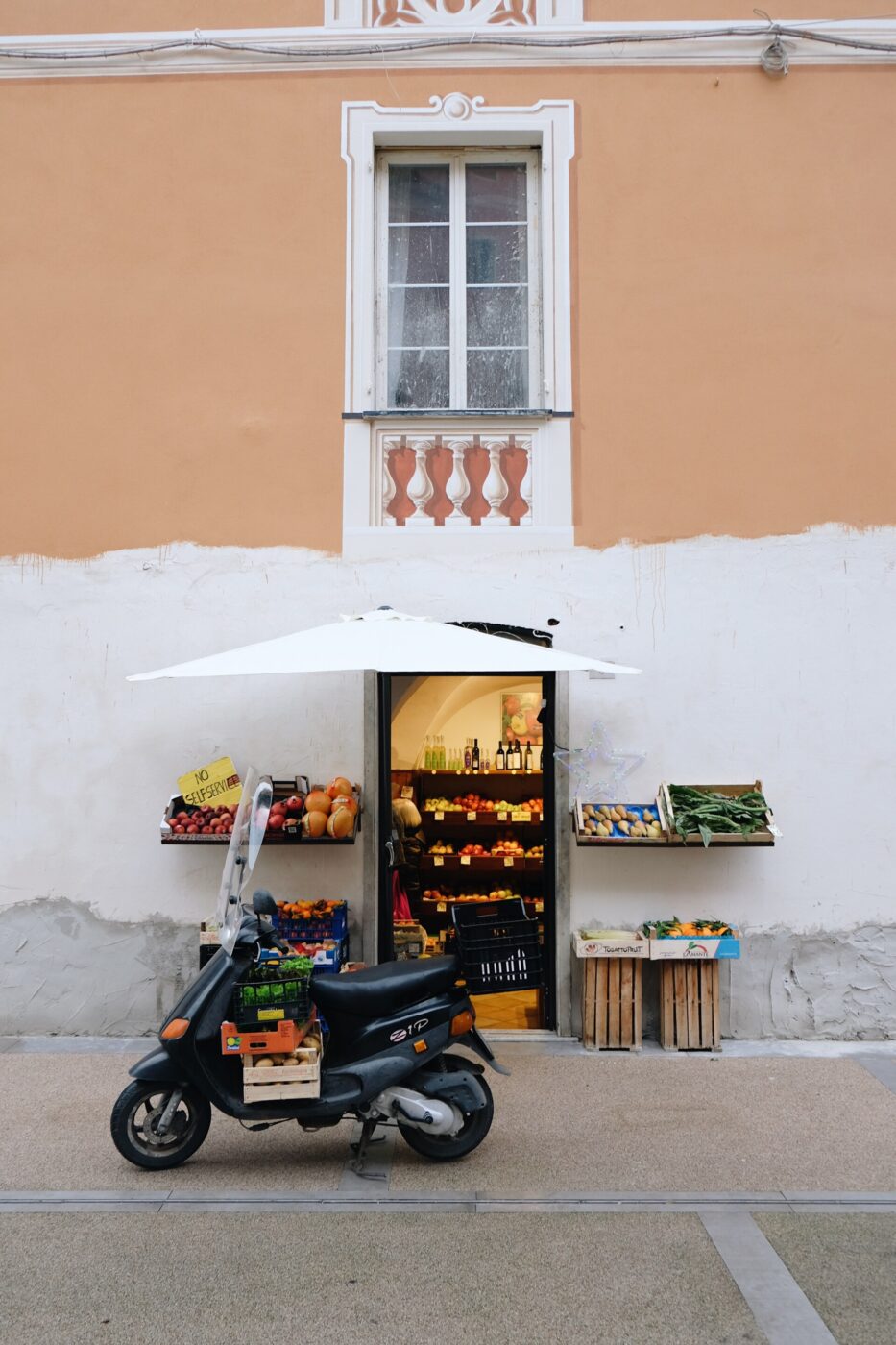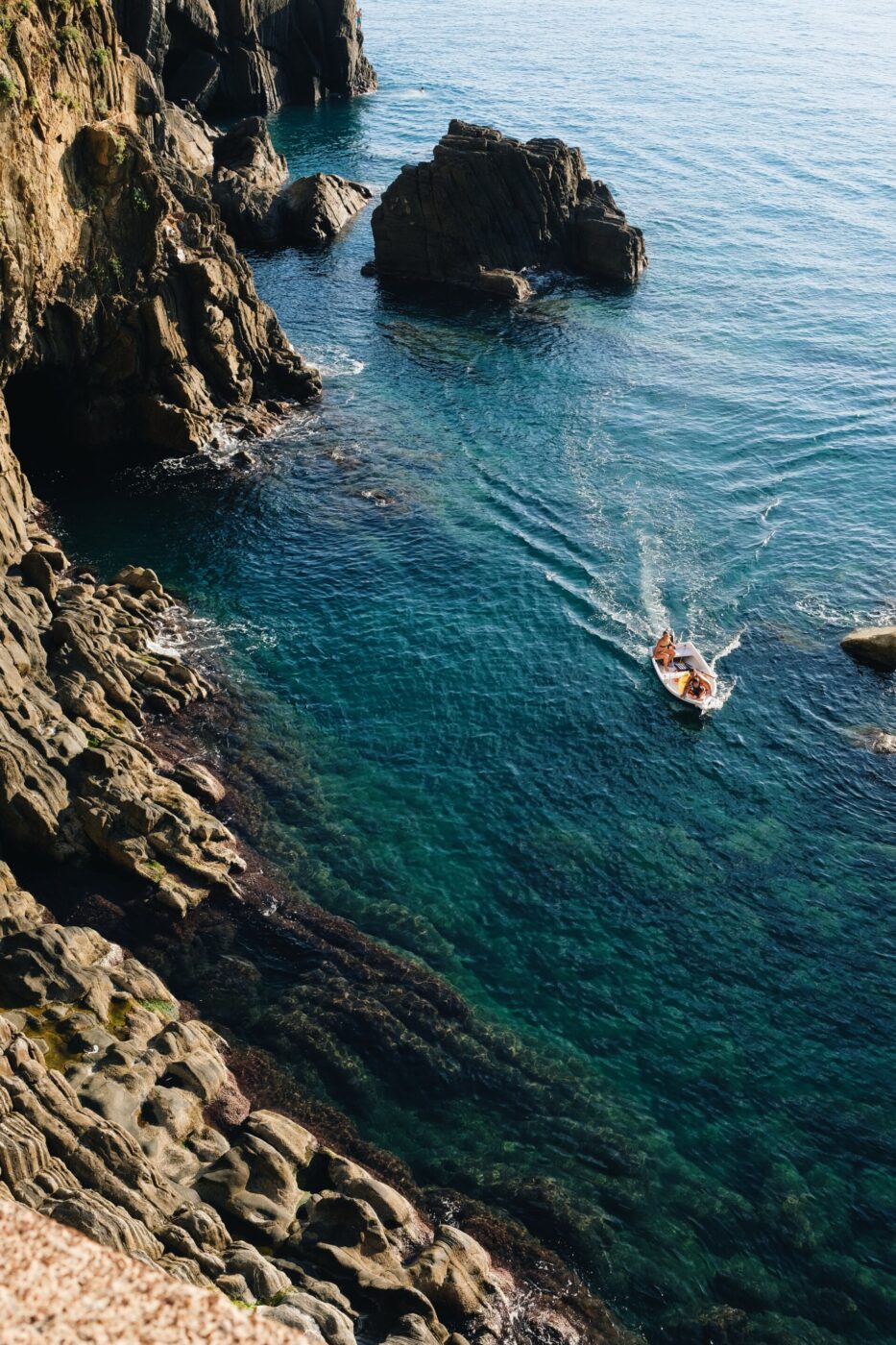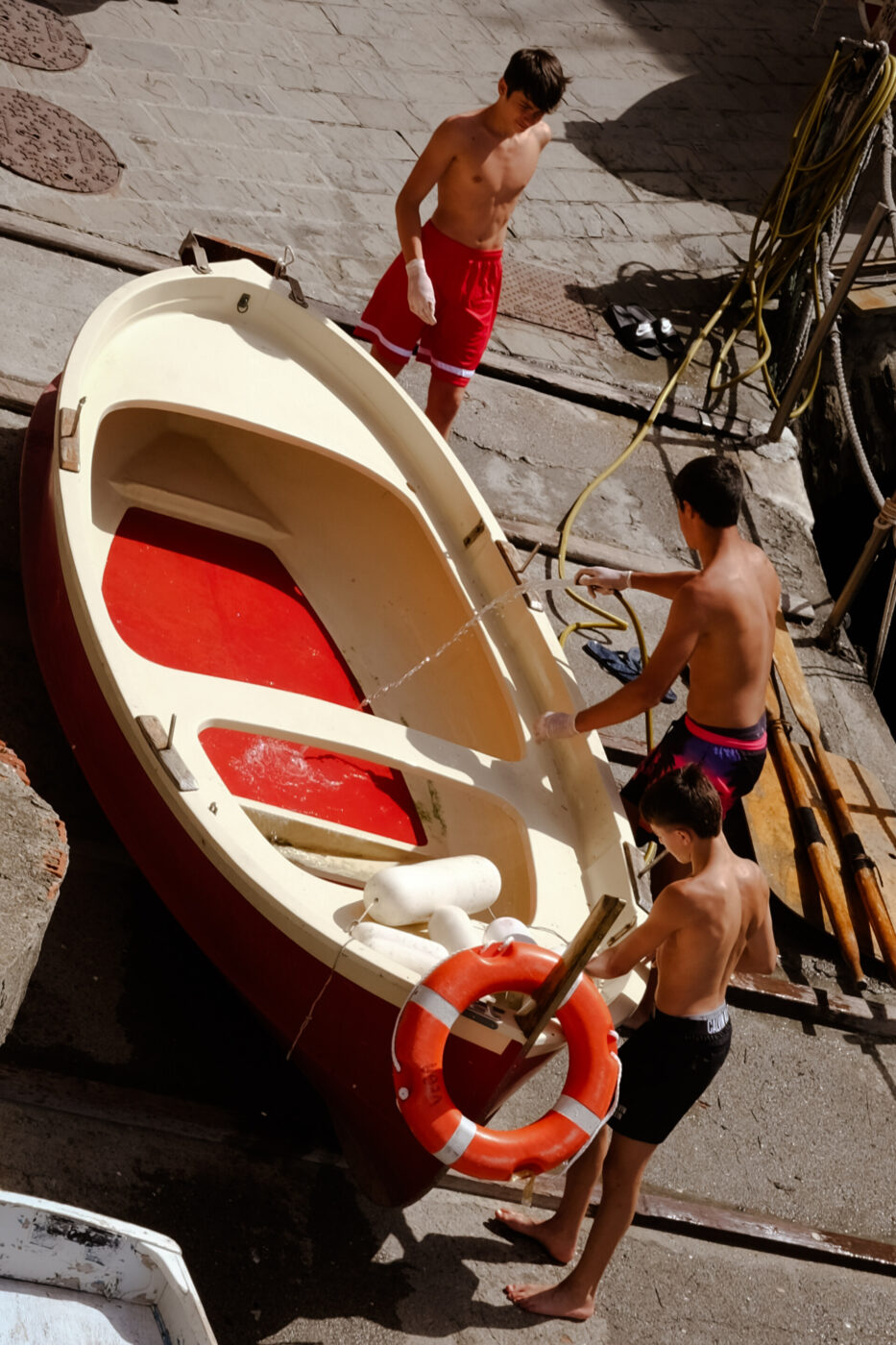“What is it with the Americans and Cinque Terre?” asked a Danish fellow dining beside me at La Cantina di Miky in Monterosso al Mare. “We thought we found a hidden gem, then we got here, and I’ve never seen so many Americans in my life.”
For better or worse, Italy’s famed Cinque Terre, or “Five Towns,” is an American darling. The craggy, vertiginous 15-kilometer stretch of Italy’s northwest Ligurian coast is scattered with compact clusters of bright villages. Travel guidebook writer Rick Steves fell for the region in the 1990s and started spreading the good word–it traveled fast. Today, nearly 3 million annual visitors, day-trippers included, swarm the fragile territory. And it’s not just Americans.
It might seem clichéd that the area has been my Italian beach respite for nearly a decade. But I have a dear friend who lives there, so I like to think I would have become acquainted with the national park and UNESCO World Heritage site even if it were still “undiscovered.” It’s true–the crowds can get under your skin and overshadow the soul of the land that 3,500 people call home. But experiencing the over-touristed destination like a local isn’t impossible. Here are some tips for doing so.
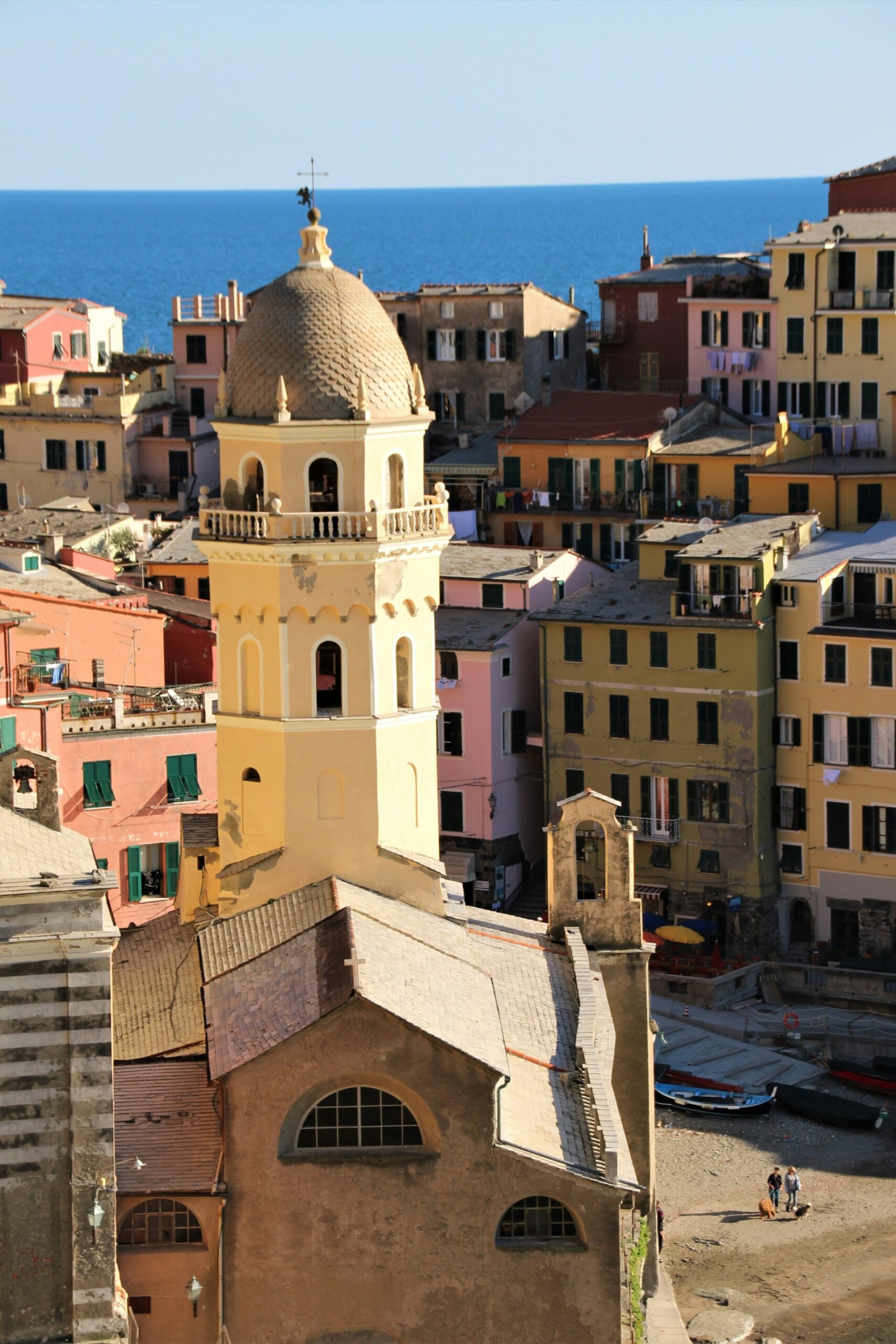
When to visit Cinque Terre
Though a handful of restaurants stay open through the winter, Cinque Terre can feel like a ghost town from November to March, which some travelers find alluring. It’s pretty much mobbed from mid-May through early September. Though still crowded, autumn and early spring are generally less suffocating than summer.
Overview & getting around Cinque Terre
From west to east, the five towns are Monterosso al Mare, Vernazza, Corniglia, Manarola, and Riomaggiore. Once upon a time, boats were the only means of transport between the towns, which are at their most evocative from the water. Take the ferry from Monterosso to Riomaggiore, then return on the train and town hop along the way. Or, craft your own itinerary with a private boat.
Corniglia, the only one without a proper harbor, perches prettily atop a 300-foot cliff and is reached via the 377-step Lardarina Staircase or a shuttle from the train station. The Cinque Terre Treno MS Card includes unlimited travel on the Cinque Terre Express trains, along with hiking trail access, and starts at €19.50 or €32.50 for a single-day pass on off-peak and peak days respectively.
Trains arrived in the 19th century, and the first roads were paved in the 1960s. Given the steep, unspoiled territory, ascending and descending the dizzying, narrow streets by car is not only arduous (Monterosso to Vernazza can take up to 40 minutes)–it can also make you queasy. Plus, only a handful of vehicles, like taxis, buses, and residents’ cars, can enter the towns, and there’s limited parking on the fringes. Of course, you could always traverse the old-fashioned way, the method that predates all modes of land transport: on foot via the 120 kilometers of hiking trails.
If you’re flying, the closest airports are Pisa and Genova.
Hiking
Seventy-four miles of hiking trails are etched into the seaside hills and cliffs. Access is free from mid-November to early March, while peak-season hikers must purchase the Cinque Terre Trekking card. Pricing for a daily pass starts at €7.50 or €15 euros for off-peak and peak days respectively. The trail between Monterosso and Levanto, the town to its west, is free year-round and tends to be less crowded.
The Via dell’Amore, or the Path of Love, is the least strenuous route, linking Manarola and Riomaggiore on a mostly direct, half-mile walkway just 100 feet above the sea. A stretch of the path reopened in 2023 following a decade-long restoration to repair damages from the 2011 landslides. The full reopening is slated for July 2024; visitors can access the trail on a guided tour only.
Beaches
You can cool off in the harbors of Vernazza, Manarola, and Riomaggiore, and a 10-minute walk through a pitch-black abandoned train tunnel in Corniglia leads to the clothing-optional Guvano beach. For a full-fledged beach day, head to Monterosso, the only town outfitted with a large sandy seaside (while there, don’t miss checking out Il Gigante). If you’re taking the private beach club route, book your sun lounger and umbrella in advance–I recommend Stella Marina.

Stella Marina Beach Club; Photo by Michele Marchesi
Where to eat in Cinque Terre
Monterosso
Ristorante Miky has been a mainstay in Monterosso’s new town since 1980–the tableside preparation of its signature, spaghetti all’acciugata (with anchovies), is complete with pyrotechnics. Its less-formal offshoot, La Cantina di Miky, opened in 2008. Classics like pesto and the anchovy sampler never disappoint, and the ever-changing, flavorful pasta dishes may include house-made squid ink bavette made with sea mantis bisque, calamari, and fresh pea cream. Il Massimo della Focaccia is home to some of the finest versions of the local flatbread, along with other specialties like torta di riso (a savory rice tart) and torta verde (a savory pastry filled with greens).
Tucked into a side street off the main drag, Il Frantoio bakery is a must for farinata, a Ligurian chickpea pancake, and, from 4 PM, pan fritto (fried bread), a pillowy street food that’s even more glorious when stuffed with gooey stracchino cheese. No utensils required–just bite right into it and be ready to swoon.
Vernazza
At Da Sandro, you can enjoy the famous, though elusive, tegame di Vernazza, a potato and anchovy dish flavored with lemon, fresh tomatoes, oregano, and rosemary.
Corniglia
Corniglia’s staircase deters some travelers. Should you brave the ascent, reward yourself with a homestyle repast at Osteria a Cantina de Mananan. The seafood dishes, like the mixed antipasto, are always spot on, though carnivores shouldn’t skip the coniglio alla Mananan, a version of typical Ligurian wine-braised rabbit flavored with olives, pine nuts, and herbs like thyme and rosemary. Skip dessert and head to Alberto Gelateria for a scoop (or two) of basil gelato drizzled with extra-virgin olive oil.
Manarola
A family-run institution beside the Via dell’Amore, Da Aristide is a 60-year-old mainstay for elegant seafood, like grilled octopus with potato cream and lemon zest, and reliable pasta classics like linguine with clams and trofie al pesto. At Cappun Magru, try the dish that lends its name to the restaurant, an elaborate old-school Ligurian seafood and vegetable salad of sorts that’s far between these days.
Riomaggiore
Fuori Rotta’s creative dishes showcase the territory, like wild boar ravioli and blueberry sauce or risotto-style pasta with fava beans, clams, and crustaceans. Otherwise, book a harborside table at Rio Bistrot for modern seafood-based preparations like risotto cacio e pepe with shrimp crudo.
Reservations are strongly recommended for all.
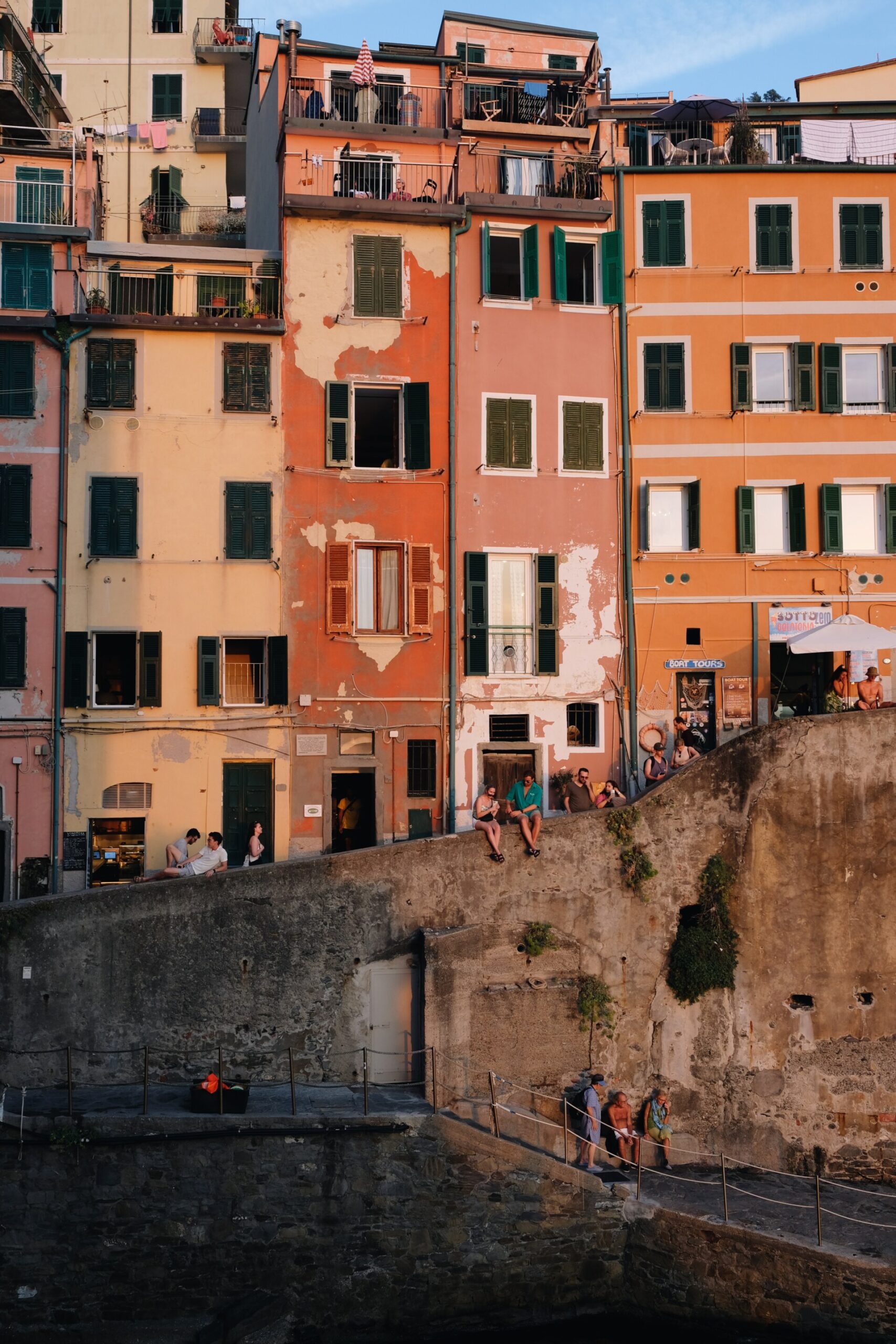
Riomaggiore; Photo by Claudia Koehler
Where to drink in Cinque Terre
Cinque Terre is one of Italy’s oldest winemaking regions, and producers follow a painstaking process that hasn’t changed much since Roman times. Dry stone wall terraces cling to the cliffside to support vine cultivation, a practice that dates back to the 11th century. To sample the local juice, sit under the green umbrellas at Enoteca Internazionale in Monterosso’s old town and opt for a flight of five Cinque Terre red or white wines–one from each town. Pair them with the bruschetta, jumbo slabs piled with local anchovies or shrimp crudo and stracciatella. At Riomaggiore’s La Conchiglia or A Pié de Ma, watch the sky morph into a fantasia of pinks and oranges as you sip wine from, say, Vetua or Possa during sunset. Ghemé, an enoteca on the town’s main artery, also offers an excellent aperitivo.
At Torre Aurora in Monterosso, set in a historic 11th-century tower, sip one of their clever libations while you gaze at the sea and the other four sun-kissed towns. The Sombrero mixes tequila silver, mezcal, passion fruit, orange and cinnamon infusion, salt, and tajin. Couple it with seafood crudo to subside any hunger pangs.
In Manarola, head to Nessun’ Dorma for drinks, local wines, or craft beers. Sip the namesake cocktail made with smashed lime and brown sugar, fresh mint, vodka, Batida de Coco, and watermelon puree overlooking Cinque Terre’s most Insta-famous image: Manorola’s kaleidoscopic jumble of tired clifftop facades that drops into the teal harbor.
Further afoot
It would be a shame to miss Portovenere, nicknamed the region’s “sixth terre,” east of Riomaggiore and reachable via ferry. The village borders the magnificent Golfo dei Poeti (Gulf of the Poets), so-called for all the scribes passed through, like Lord Byron, for whom a cove is named. The harbor is lined with tightly packed candy-colored houses that conceal a twisty medieval old town that climbs the hillside.
Levanto, the town west of Monterosso, has a wide beach and is connected to the neighboring villages of Bonassola and Framura via a converted rail tunnel. Book a table at L’Agave in Framura for lunch with an azure view, and in Levanto, treat yourself to a scoop of the namesake flavor at Gelateria Limone e Basilico (Lemon and Basil).
Where to sleep in Cinque Terre
I prefer staying in Monterosso. It’s the largest and busiest, and the Intercity train from Milano Centrale stops there. Reaching the other towns requires jumping on a local train, which can be daunting with luggage and the crowds. Taxis in Monterosso, though, are few and far between and overpriced for non-locals. The four-star Porta Roca near the old town is about a 15-minute, mostly flat walk from the train station that concludes with a slight ascent.
A bit further out, La Sosta di Ottone III is a wonderful hotel near Levanto, perched high above the sparkling sea. Laidback and authentic to its core, the six-room stay is blissfully removed from the Cinque Terre crowds, yet close enough to hike into Monterosso for a beach day.
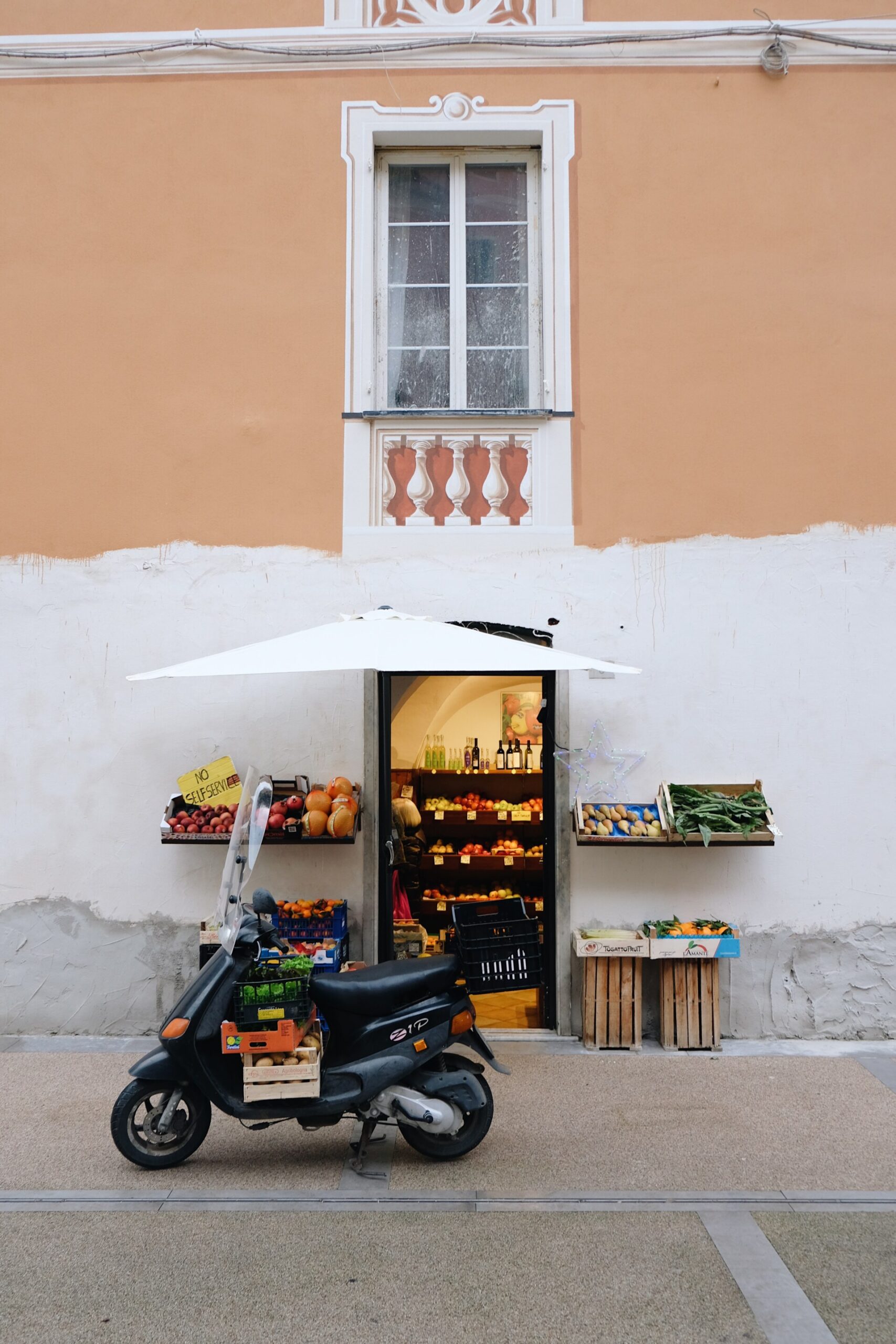
Levanto; Photo by Claudia Koehler


